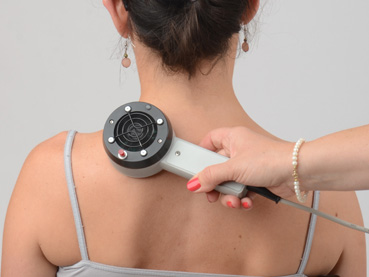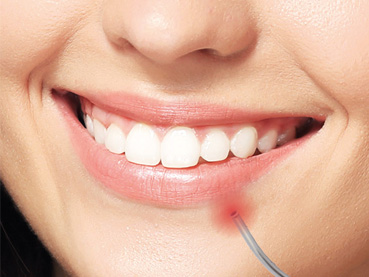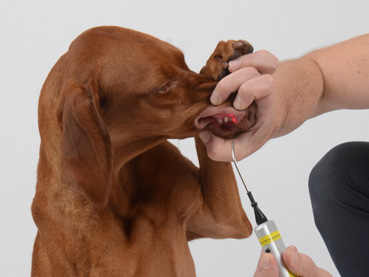About soft laser
Soft laser therapy
Soft laser therapy is a painless treatment that can be used in many areas of healthcare, which in some cases even brings immediate improvement.
The working mechanism of soft laser therapy
Soft laser therapy means that we treat a diseased tissue, or at least a tissue in a worse condition, with low-intensity irradiation in the range of 400-900 nm (in the international literature this is known as LLLT, low-level laser therapy). The effect we get is changing the permeability of the cell membrane, leading to increased mRNA synthesis and cell proliferation. These effects are not the result of the thermal effect of the radiation, as in laser surgery, but are due to photochemical interactions.
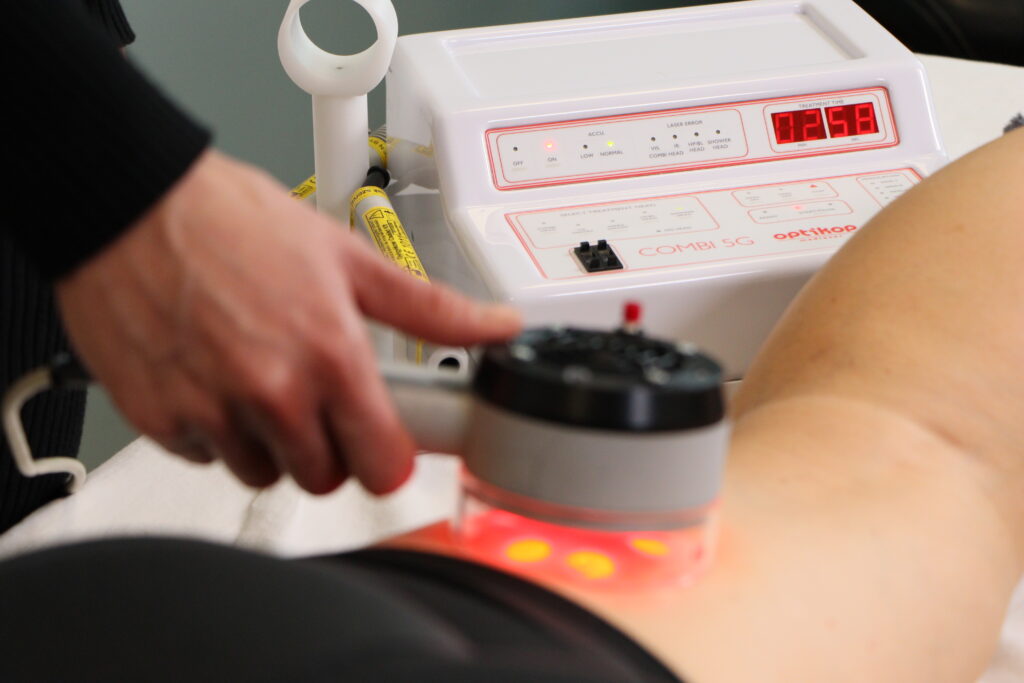
For such an interaction to occur, radiation-absorbing molecules, photoreceptors, are needed. Today we know several of these, one of the most important seems to be cytochrome-C-oxidase, which was also discovered as a photoreceptor in the 80s. It is a transitional enzyme in the Krebs cycle taking place in the mitochondria, the result of it is adenosine triphosphate for energy storage – ATP, i.e. the “fuel” of the cell. In other words, by improving the energy supply of the enzyme molecule, the laser light ultimately helps ATP synthesis and the cell’s energy supply. This process takes place most effectively in cells with a low redox state.
Harvard University researchers recently discovered that nitric oxide inhibits ATP production by binding to cytochrome-C oxidase, and this bond is broken by laser light, thus helping to restore the process. This is also a possible explanation for the effectiveness of laser light treatments. We do not yet know exactly what happens in a faulty or inhibited cell. That is why the selection of the appropriate laser wavelengths is helped more by the data accumulated in medical experience than by the scientific background.
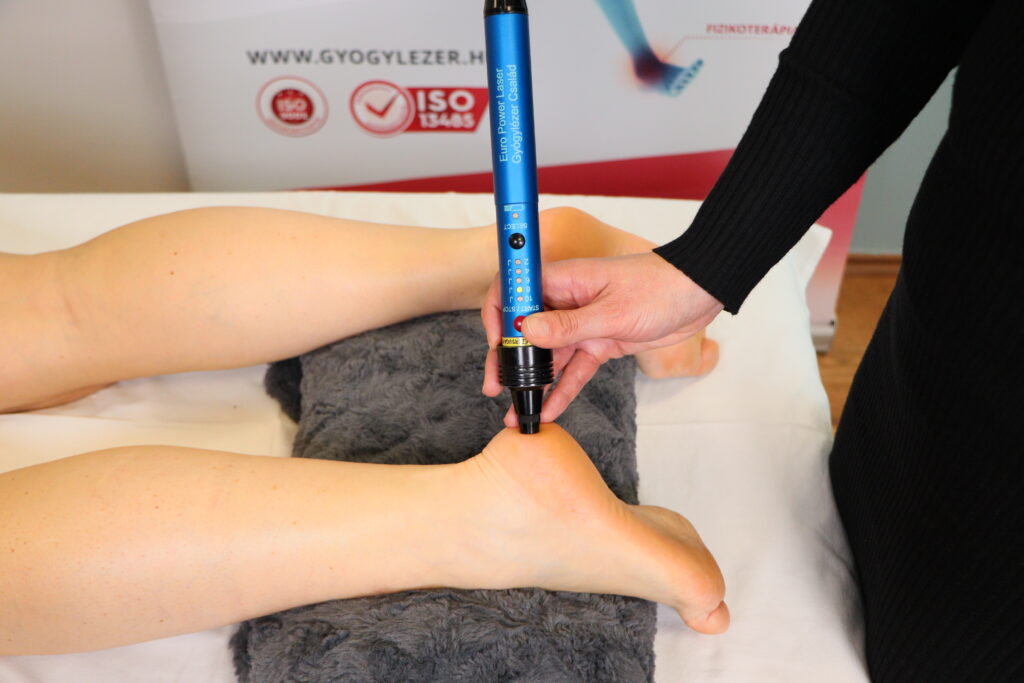
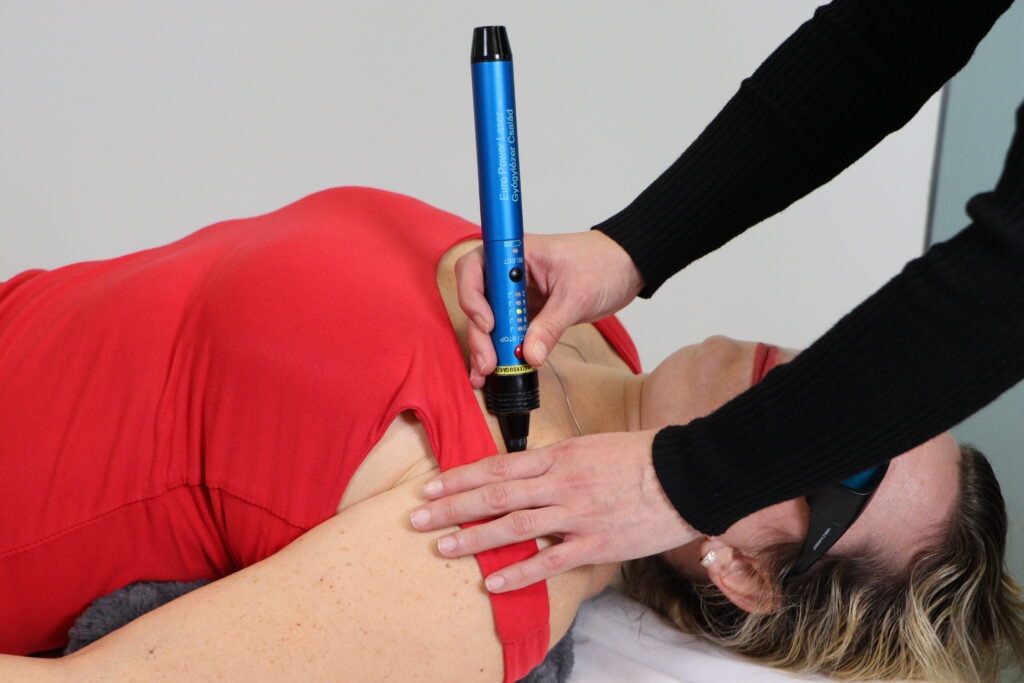
Effects of the soft laser treatment
As a result of cellular processes and biological effects, wound healing is accelerated, if the laser light is correctly dosed, the scars resulting from the wound will become more beautiful (this property of the laser is exploited in cosmetology), the patient’s pain will subside, spasms will disappear or ease, and it will be easier to move the affected body part. Together, these not only speed up the healing process, but also significantly improve the patient’s well-being and quality of life. For all these reasons, the laser is a very useful additional therapeutic tool in the hands of the doctor.
Biological effects
- stimulation of cell proliferation
- stimulation of cell regeneration
- enhancing cell membrane transport
- strengthening of microcirculation
- stimulation of revascularisation
- immune system stimulation
Chemical effects
- pain relief
- acceleration of wound healing
- reduction of acute and chronic inflammations
- reduction of edema
- nerve cell regeneration/nerve stimulation
- reducing muscle tension
- muscle spasm relief

Advantages of soft laser treatments
- painless, relatively quick results can be expected, in case of acute complaints, recovery takes half as long as without soft laser treatment,
- aseptic, can be performed without contact,
- the indication area is wide,
- can be repeated several times,
- can be combined with other therapies,
- mobile, can be performed in a doctor’s office, hospital, or in the patient’s home,
- economical, requires a one-time investment, maintenance costs are minimal,
- no side effects,
- reduces medication use and the number of sick days.
You can learn more about the rules of soft laser treatments (e.g.: methods of treatment, determination of treatment locations, treatment laws for acute and chronic diseases, dosage laws, avoiding under- and over-treatment, etc.) in our course and in the accompanying book.

